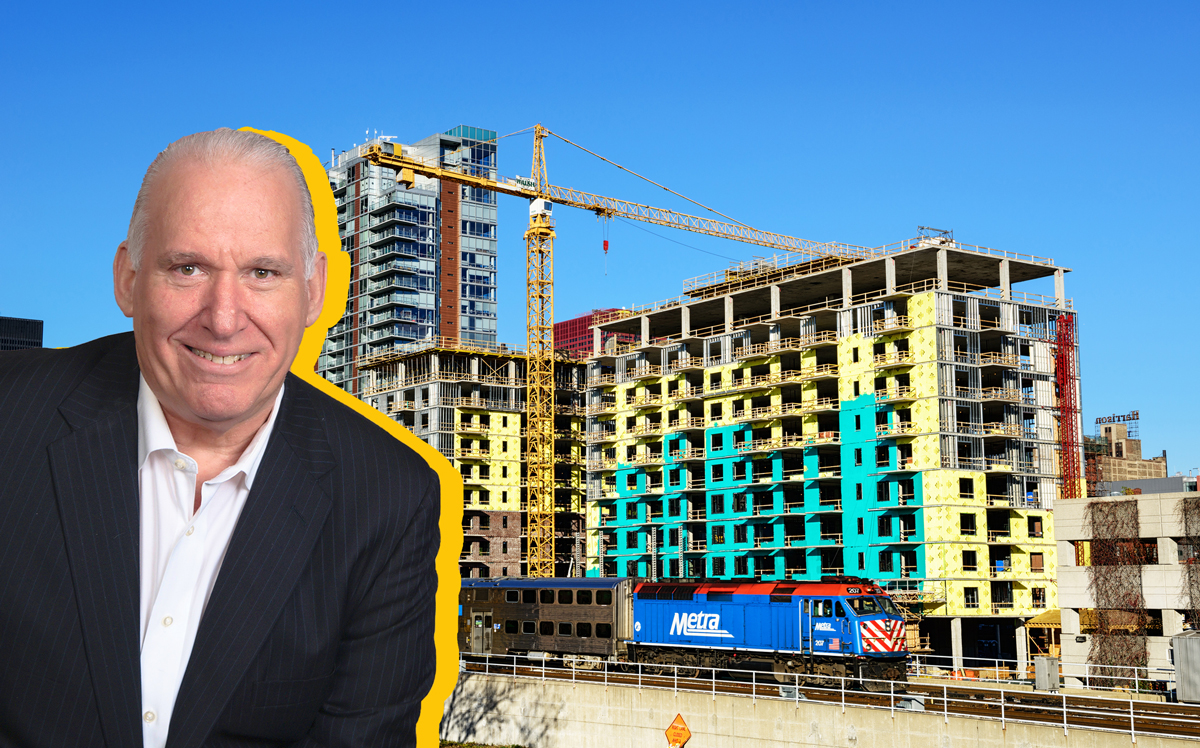A recent wave of rules intended to curb the city’s deepening affordable housing crisis is only making the problem worse, according to a new study backed by a construction industry group.
Plans for more than 3,000 new homes, including 300 affordable units, have been “put on hold or canceled” in parts of the city where affordability requirements were tightened in 2017, according to a study released Monday by Cushman & Wakefield and the Home Builders Association of Greater Chicago.

Susan Tjarksen
The 45-page report cites just two apartment projects that have secured permits in compliance with the 2017 rules, which raised the number of affordable units required in new projects inside three “pilot zones” on the city’s Near West and Northwest Sides. At least another 11 projects proposed in the zones were scrapped “because each of those developers determined that the capital stack does not support the economics of the deal, given the number of affordable units required,” according to Cushman & Wakefield managing director Susan Tjarksen.
Tjarksen and the report’s other authors calculated the dashed plans will cost the city more than $635 million in property tax revenue during the next 30 years.
The authors did not identify which specific projects had been canceled as a result of the rules.
Real estate professionals have cried foul over the city’s “affordability pilot zones,” which require property owners to charge below-market rents on up to 20 percent of new units in return for zoning changes they need for construction — double the 10 percent minimum threshold in the rest of the city. Developers argued the new rules would cut off so much potential revenue from the buildings that investors would stop backing them altogether.
Overall apartment proposals did drop sharply inside the zones during the first year after the new rules went into effect, an analysis by The Real Deal found last year.
Pat Cardoni, president of the builders association’s Chicago chapter, said the group timed its report to make sure his industry has a “seat at the table” when Mayor-elect Lori Lightfoot takes office next month.
“We recognize that everyone in public policy is trying to do the right thing, but sometimes they don’t have the business acumen to see the unintended consequences,” said Cardoni, who also runs Cardoni Custom Homes. “We’ve got people who are coming into Chicago and need housing Downtown, and we can’t give it to them because we can’t get enough housing approved.”
Cardoni added that a relative shortage of new, higher-end apartments could drive up competition among high-earning renters, pushing them into other neighborhoods where longtime residents are vulnerable to displacement.
Under the city’s 2015 Affordable Requirements Ordinance, any developer seeking a zoning change for a residential building with 10 units or more must make at least 10 percent of its units affordable. But developers can opt out of most of that requirement by paying a fee to the city — a loophole closed inside the pilot zones under the 2017 revision.
Last year the city created two additional pilot zones in Little Village and Pilsen, where Alderman-elect Byron Sigcho-Lopez (25th) has proposed requiring as many as 30 percent of units be set aside as affordable.
But even a 20 percent mandate is a bridge too far for most developers, Cardoni said.
“I don’t think 10 percent is much of a problem, but 20 percent is where the problem begins,” Cardoni said. “Developers aren’t using their own money, they’re using institutional money — and institutional money is going to go where they can get a reasonable rate of return.”
The report includes a “case study” for a 224-unit apartment complex proposed in the Near North pilot zone whose net operating income would be about $4.2 million with no affordable units, giving it a 10.3 percent profit return after three years. The same building would reap just a 6.8 percent return if 10 percent of units were affordable, and 4.6 percent return if 20 percent of units are rented below market rate.
Still, the new math has not stopped plans for more than a dozen major developments approved inside the zones since the rules went into effect. Tribune Media’a planned 37-acre “River District” megaproject is poised to deliver 820 on-site affordable units out of more than 5,000 total homes planned. Separate proposals by Related Midwest, Tandem Partners and MCZ Development are collectively set to bring another 109 affordable units to Fulton Market under the “pilot zone” rules.
But some developers switched their residential plans to uses rather than comply with the rules. Trammell Crow proposed a 300-unit apartment complex at 1375 West Fulton Street in 2016, inside the Near North pilot zone, but the firm last year changed its plans, and is now proposing a 315,000-square-foot office building on the site.
By leaving out office and retail developers, the pilot zones “put the burden of a societal problem solely on the burden of multifamily” builders, according to Paul Colgan, a lobbyist for the Home Builders Association.
The report also found a sharp drop in the number of properties bought by multifamily developers since the rules debuted. Cushman & Wakefield noted a 78 percent decline in “transactions of sites with potential for multifamily development” between 2015 and 2017.
Some builders have said they would be able to reach the 20 percent threshold more easily if they could buy land from owners who factored the new rules into their selling prices. Onni Group blamed the affordability requirements last year when it backed out of a $50 million deal to buy an eight-acre site on Goose Island, but it doubled back and bought the land this year after securing a $12 million price cut.
The Home Builders Association followed up its critique of the city’s rules with a list of alternative affordable housing proposals, like expanding rental assistance programs and increasing tax credits for affordable development.
But until those measures come through, requiring affordable units in new private construction might be the only viable way to make every neighborhood livable, according to Sarah Duda, deputy director of the Institute for Housing Studies at DePaul University.
“It’s extraordinarily challenging to preserve affordable units in areas where there’s not a lot of developable land, and where there’s not a lot of city-owned property,” Duda said. “And in the absence of more subsidy, (the affordability requirements are) one of the only mechanisms we have to capture all that demand and use it to create homes people can afford.”
